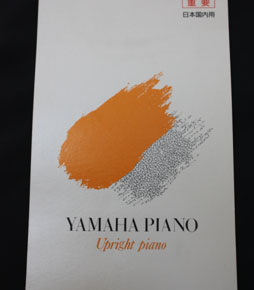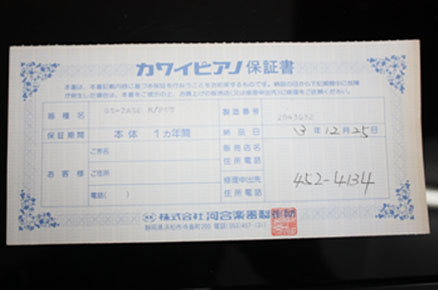Choosing a Piano
The following article is written by Peter En Lin Zhou, an Associate Member of the Piano Technicians Guild. Visit them at http://www.ptg.org/
1. It is always important to head into a store to look and especially listen to a piano before you decide to purchase it. The first thing you will notice is the outside cabinet of the piano. Be sure that there is no obvious damage to the cabinet, as they cannot be removed easily.
2. Each piano is unique and they will all sound different. Some will be a little brighter in tone whilst others have a rich and mellow hum to it. Our professional staff can give you a tour of all the pianos and you can decide if they suit your budget and musical taste.
3. After you have listened to the sound and had a good look at the piano's polish, you should have the pianoist try the piano. Every piano has a different touch. Also, it is a good idea to play some technical exercises (such as a chromatic scale), as this gives the pianist to see how all the keys respond.
4. It is a good idea to make sure all the pedals are in working order.
5. You can determine the age of the piano through its series number. Mr. Piano has a Piano Atlas that details the approximate ages of all the pianos, matched against their series number. The information is also freely available online.
6. Most Yamaha and Kawai pianos contain certification from the manufacturers. When these are present, you can be sure that the piano originated from Japan.
7. Finally, it is crucial to remember that ALL PIANOS, whether they are from the local or foreign markets are made to a certain stringent quality. They all pass tests before they make it onto the market. Hence, do no be afraid to purchase a second-hand piano, even if it was from Japan or another foreign market. If you are interested, Kendall Ross Bean of www.pianofinders.com/techtalk/seasoning.htm has expressed his view:
"New pianos 'specially' prepared for the U.S. market can easily end up in worse shape than a used piano that was originally sold in Japan (which later ends up in the U.S), simply because of adverse climate conditions, or lack of proper care, in the home, regardless of what the outdoor climate is."
|

Certification for Yamaha pianos
|

Certification for Kawai pianos
|